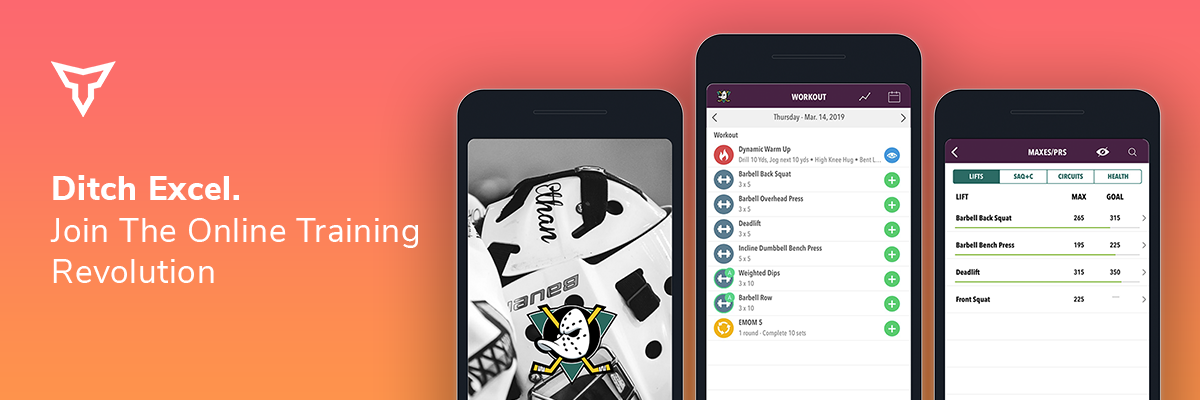How to Price Your Online Training Programs
One of the most common questions I get from coaches delving into our Online Payments Portal is:
"How much should I charge for my programs?"
As you may have guessed, the answer is identical to the many training questions you might get: "It depends." However, this article will be a solid guide to start. The below information is based on my years of experience working with some top online coaching outfits (ie: Brute Strength) and from some quantitative research the team here at TeamBuildr did on clients using our Online Payments Portal.
Pricing Is a Function of Your Time
The first point is that your price should be a function of the time input for the program which you are selling. The more time dedicated to a client within a program, the higher the price should be. That should be obvious.
What is not obvious is how to arrive at that price. A exercise that every online coach should do is to review how much time is dedicated per month to each client within a program or product that you plan to sell. For example, let's say you are selling a monthly package which includes customized programming, client consultation over video, form review, and nutrition consultation. Try to define how much time is spent for each of these features per month:
- Customized programming: 30 minutes
- Video consultation: 1 hour
- Nutrition consultation: 30 minutes
- Form review/feedback: 30 minutes
The total monthly time per client in this package is 2.5 hours. Now ask yourself, what is your time worth? Then do the math. This is obviously up to you, but it will be impacted by your current market (local rates) and the clientele you are targeting.
Creating a Volume Business
Online training affords coaches the opportunity to save the time spent coaching in-person. And although this will reduce the price of the programming, it gives coaches an opportunity that does not exist in-person: the ability to sell their coaching services at a higher volume.
In my podcast with Jerred Moon, Founder of GarageGymAthlete, Jerred says that he most recently settled on a price of $25 USD per month for his program - and that includes everything his program has to offer.
Jerred did not settle on this model overnight, he has built the GarageGymAthlete brand for years - he has enough reach and enough customers so that he makes his business work on volume. In the beginning, Jerred said he charged higher prices and had a less scalable way of delivering his product to customers.
I think charging a premium is something that you shouldn't be scared of doing. But if you want to go down the membership wrap route that we have, just know that it takes a lot. And it's a very, very difficult and challenging business model. - Jerred Moon
In our research, we found that any program that does not include individualized programming and does not include time-based consultation (form coaching, nutrition consultation, etc.) will be typically priced anywhere from $25 - $50/mo. and usually always under $100 per month. This is volume-based pricing model - more time should be spent marketing the program and driving sign ups than will be spent on training the clients.
Value-Add
Running a volume-based online program does not mean a coach cannot overdeliver or pack value into an offer. Out-of-the-box programming can also be accompanied by a variety of value-added materials and resources. For instance, using our integration with MailChimp coaches can receive automated email drips that come with PDF guides on nutrition, recovery strategies, recipes and equipment recommendations. I have seen coaches mail a foam roller in exchange for a 3-month commitment ($15 in exchange for $100 - the numbers work!).
Leveraging a community goes a long way in adding value to a training subscription as it is much more efficient for a coach to consult and advise in a group forum than spending time 1-1 with each client. Market access to your Facebook group or other community as a benefit of your training program subscription!
Time- and Service-Based Programs
The other finding our research yielded was that a program offering some sort of time-based or service-based item/feature was priced at a minimum of $100/mo. and often times more. These services usually included a 15-minute to 1-hr. "consultation" on a recurring basis. These calls are used to check in progress, discuss training feedback and more. This can also include reviewing technique if your service is highly focused on that. And of course nutrition can be a highly-consultative service when it comes to dietary behavioral work, macro-nutrient assessment and more.
These services, in our opinion, are considered higher-end and will require more time, and therefore raise the price of the subscription training service.
Pricing Strategies Over Time
This is perhaps the most subjective component of pricing; how does one adjust their pricing over time. In Jerred's case, GarageGymAthlete was a high-touch, higher priced program in the beginning. Then, Jerred became more efficient at delivering services and created a system where clients funneled themselves into a program that best fit their goals without needing a coaching assessment. As his brand and audience grew, Jerred lowered his price to expand his customer base while simultaneously reducing the time spent per client. He and his team spend their time finding scalable ways to best serve their clients.
Another approach would be make training programs very accessible with a low price, and to raise the price over time as the system develops and the program comes into its own. However, coaches should be aware that existing customers will either need to pay more or keep their pricing.
Generally speaking, it's easier to raise price than lower prices, because once you lower prices, it's hard to turn around and charge more.
I hope the above information and strategies help inform the decisions to price online training. Perhaps the last thing I will say is: Do not underestimate the power of marketing. The fitness industry has shown us for decades that the ability to create demand for a fitness product is as powerful as its results.
Subscribe to our blog
Subscribe to receive the latest blog posts to your inbox every week.
Related posts

Simple Technologies Coaches Can Use to Improve Strength and Conditioning

6 Programs That Your Athletes Can Do At Home


